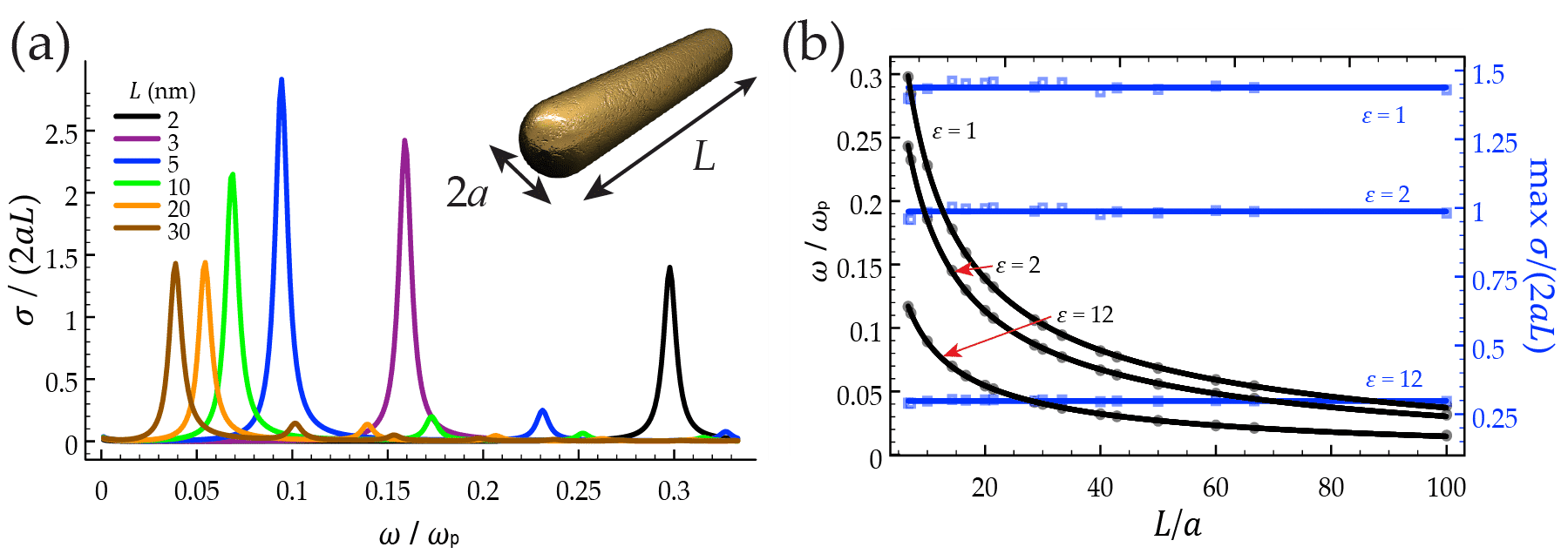
Plasmonics in Atomically Flat Gold Structures
Plasmons in atomically thin gold structures have been experimentally observed over the past decade, in particular for atomic gold wires formed at the steps of Si(557) when it is decorated with a low-coverage gold layer [1 - 4]. The observation of plasmons in these systems has been carried out using electron energy-loss spectroscopy, as they are ultra-confined, so that their coupling to light is too weak to be observed. Stimulated by these results, we theoretically study finite-length atomically thin nanowires and nanoribbons. Our purpose is to increase the coupling to light in order to use these structures as atomic-scale plasmonic units.
As a first step we revisit experimental data of plasmons in infinitely long atomic gold wires and fit them to both classical and quantum-mechanical models based on the dielectric theory and the random-phase approximation, respectively. These models fit the plasmon dispersion relation extremely well for reasonable choices of parameters. We then calculate absorption cross section of finite nanowires (see Fig. 1). We predict absorptivities of ~5% for arrays of nanorods on the Si(557) surface and ~22% in vacuum. Higher unity-order cross sections are obtained for wires of finite lateral size in the atomic-scale range. Our results pave the way towards the use of atomic-scale gold structures for nanophotonics.
FIGURES

Fig 1. (a) Spectra of the absorption cross section of nanorods of radius a = 0.1888 nm and different lengths L for light incident with its electric along the rod axis, as obtained from the boundary-element method. (b). Light frequency at the cross section maximum (left vertical axis) and maximum value of the cross section (right axis) for rods supported on different substrates (characterized by ε) as a function of the ratio between nanorod length and radius.
REFERENCES
[1] K. N. Altmann et al., Phys. Rev. B, 64, 035406 (2001).
[2] J. N. Crain et al., Phys. Rev. B, 69, 125401 (2004).
[3] T. Nagao et al., Phys. Rev. Lett., 97, 116802 (2006).
[4] T. Nagao et al., Sci. Technol. Adv. Mater., 11, 054506 (2010).
sandra.devega@icfo.es
Powered by Eventact EMS